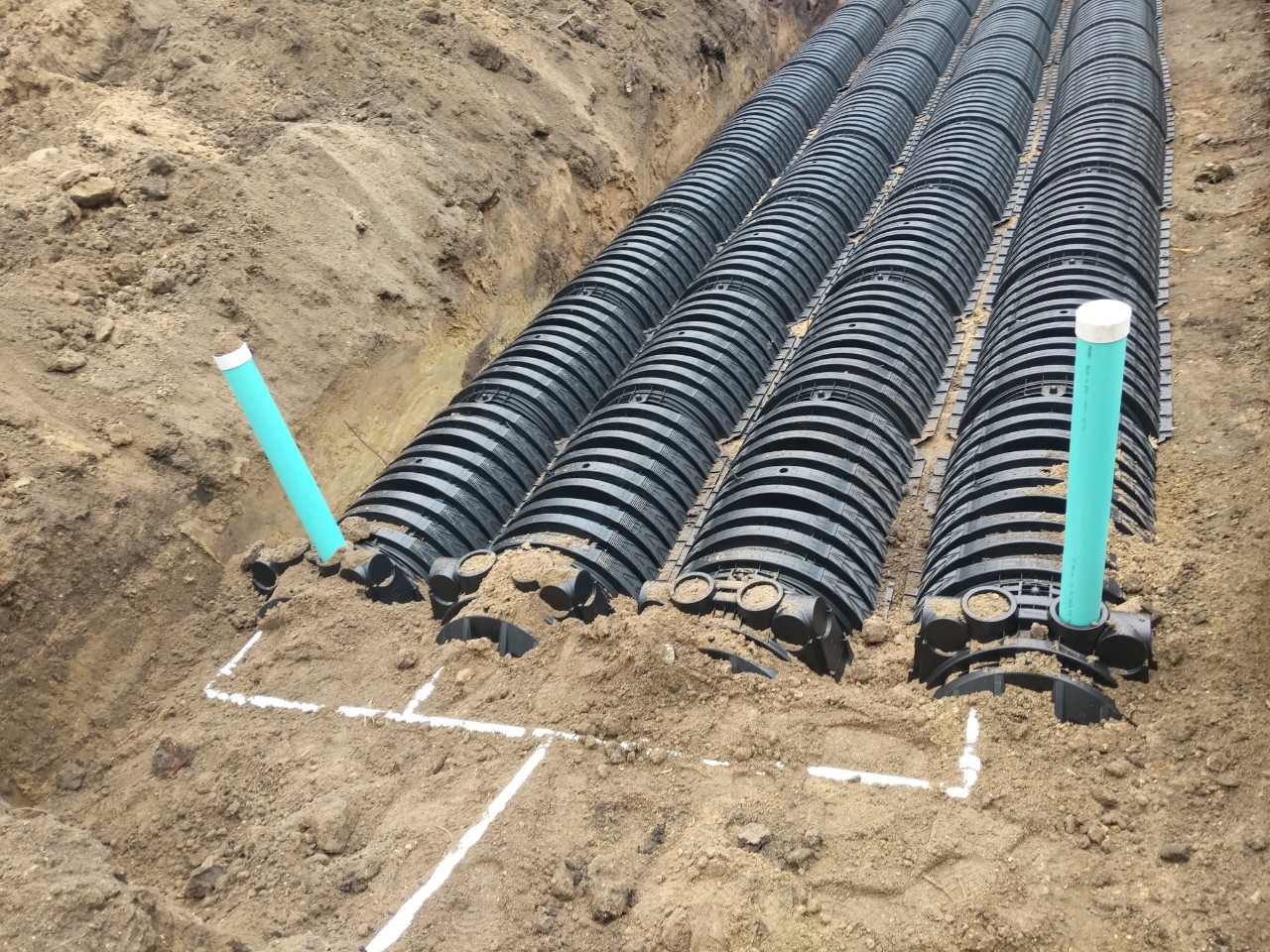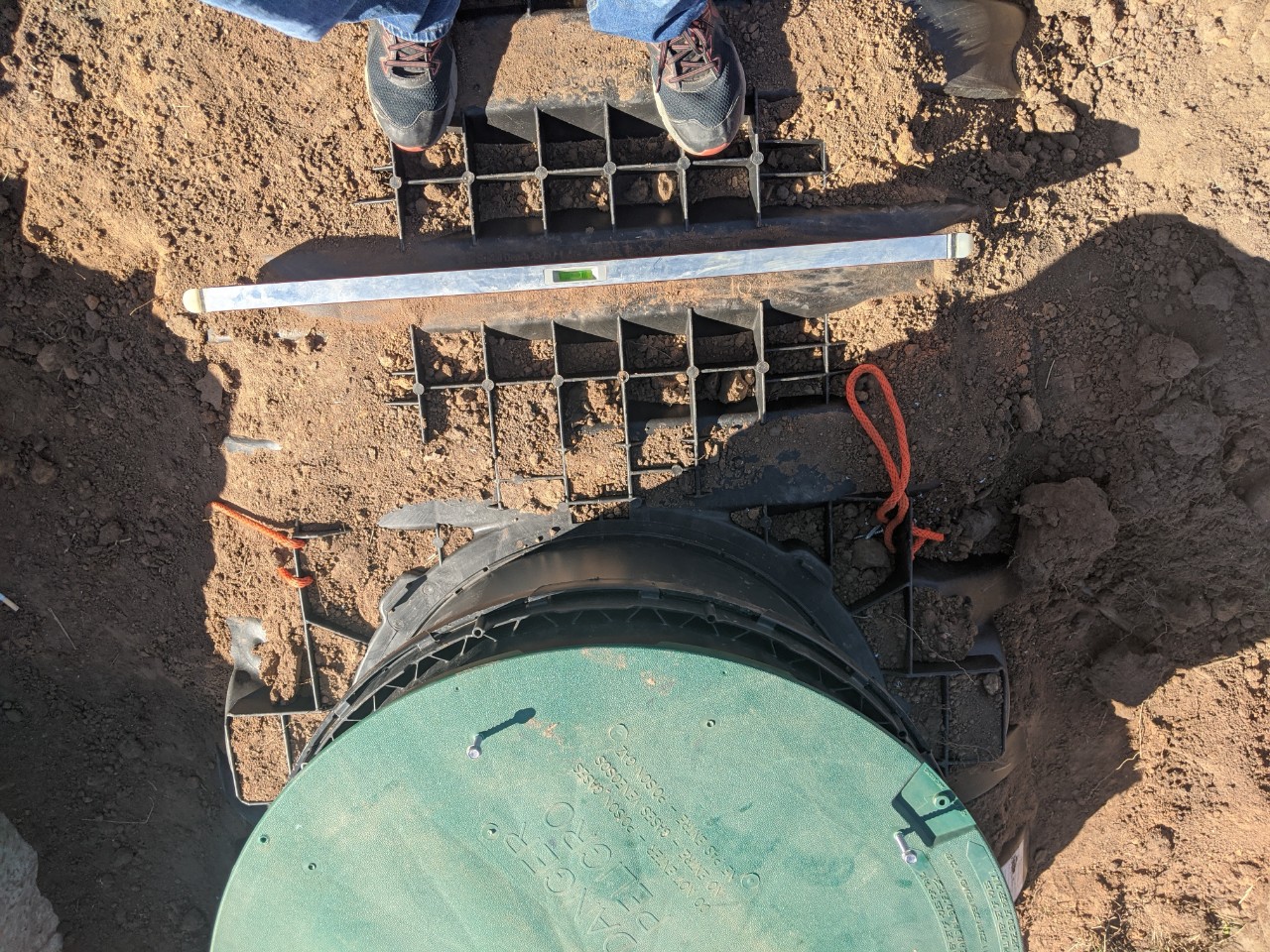Onsite Wastewater Treatment Systems "Septic Systems"
Onsite Wastewater Treatment Systems (Septic Systems):
An On-Site Wastewater Treatment System (OWTS) is commonly known as a septic system. You need to know how your OWTS works and how to maintain it to protect your health, your family's health, and the environment. Improper care of your system can cost you thousands of dollars in repair or replacement costs.
An OWTS treats wastewater on a persons property. OWTS are installed on properties that wastewater utilities cannot otherwise serve.
How OWTS Works:
Your septic system treats household wastewater by temporarily holding it in the septic tank where heavy solids and lighter scum separate from the wastewater. This separation process is known as primary treatment. Bacteria decompose the solids stored in the tank, which are later removed by a professional septic tank pumper.
The septic tank is the first stage of sewage treatment. It is a watertight container buried underground, usually made of concrete. A typical septic tank for a three-bedroom home will hold 1,000 gallons. Homes with more bedrooms will require larger septic tanks. The OWTS is designed to handle a specific amount of water. Large volumes of water will overload the OWTS.
The septic tank serves 3 purposes:
1. Gathering the floating solids in the wastewater.
2. Storage of solids, and
3. Breaking down organic materials by limiting access to oxygen.
The absorption field has various names, including leach field, tile field, drain field, disposal field, and nitrification field. The effluent (wastewater) from the septic tank is directed to the absorption field for final treatment. The suitability of the soil, along with other factors determines the best way to properly treat and dispose of the wastewater.

Septic Care Maintenance Guidelines
Do
- Inspect your septic system every 2 years if it has a pump and every 4 years if it does not.
- Pump out septic tanks every four years.
- Keep records of pumping, inspections, and other maintenance.
- Repair leaking faucets and toilets.
- Conserve water to reduce wastewater.
- Divert roof drains and surface water away from the soil treatment area.
Do Not
- Do not drive or park over any part of your septic system.
- Use commercial septic additives.
- Dig or build on top of your septic system.
- Plant anything over the soil treatment area. (non-irrigated, native grasses are okay)
- Flush non-biodegradable items into your system, such as diapers, tampons, etc.
- Dump harmful chemicals down the drain.
The first priority in the inspection process is the safety of the homeowner, neighbors, workers, and
anyone else for which the process could create a hazard.
- Do not enter septic tanks or cesspools
- Do not work on these tanks; instead, refer them to a professional.
- Do not bend or lean over septic tanks or cesspools.
- Note and take appropriate action regarding unsafe tank covers.
- Note unsanitary conditions or maintenance needs (sewage backups, odor, seepage).
- Do not bring sewage-contaminated clothing into the home.
- Have current tetanus inoculations if working in septic tank inspection.
Methane and hydrogen sulfide gases are produced in a septic tank. Both are toxic and explosive. Hydrogen sulfide gas can have a strong odor one moment, but after exposure, the odor may not be noticed.
Water Softener Guidance
Water softeners remove naturally occurring hard minerals (i.e., Calcium (Ca), Magnesium (Mg)) from the house water supply. High amounts of calcium and magnesium in the water can cause buildup on water pipes, dishes, and other surfaces water contacts. If build-up is extreme, clogs in pipes can occur, along with decreased effectiveness of detergents and soaps, and damaged water heaters. A water softener helps to mitigate these issues.
The hard water goes through a resin, exchanging the dissolved calcium and magnesium ions with salt ions. The resin will eventually run out of salt to exchange and must be recharged. A softener is recharged by backwashing to remove the built-up calcium and magnesium. Backwashing typically occurs every three to seven days, depending on softener type and usage, averaging 50 gallons of water per backwash being discharged. For further guidance, it is best to refer to a manual.
It is not recommended to add the backwash water to a septic system. The additional hydraulic load could fail the system. It is recommended that that backwash water be drained to another area within the property, away from the septic field, such as a separate drywell. A drywell is a small pit with rock placed over top. The backwash water can be drained over the rock. Backwash water from other treatment devices, such as reverse osmosis filters, should also be discharged separately from a septic system.

Symptoms of Septic System Problems
- Sewage backup. Occurs in drains or toilets (often a black liquid with a foul odor.)
- Slow flushing toilets. Many drains will empty much slower than usual, despite the use of plungers or drain-cleaning products. This can also result from a clogged plumbing vent or a non-vested fixture.
- Surface flow of wastewater. Sometimes liquid seeps along the surface of the ground near your septic system. It may have an odor and will range from very clear to black in color.
- Lush green grass over the absorption field, even during dry weather. Often this indicates excessive amounts of liquid from the system is moving up through the soil, instead of down, as it should. Too much upward movement of liquid from the absorption field could indicate problems.
- Nitrates or bacteria in drinking water well. This may indicate liquid from the system may be flowing into the well through the ground or over the surface.
- Buildup of aquatic weeds or algae in lakes or ponds adjacent to your home. This may indicate that nutrient-rich septic system waste is leaching into the surface water, which may lead to both inconvenience and possible health problems.
- Unpleasant odors around the house. Often, an improperly vented plumbing system or a failing septic system causes a build up of foul odors.
Explore these frequently asked questions developed by the Environmental Protection Agency (EPA). Topics include information about septic systems, how to care for and maintain them, paying for a septic system, and more.
Explore the National Wastewater Surveillance System, CDC's new tool to better understand the extent of SARS-CoV-2 (the virus that causes COVID-19) infections in communities.
Please use the Division of Water Resources Contacts Link, and call the appropriate environmental field office.
If the county is listed as "contract count", those counties have their own septic system assistance services. Those counties include: Blount, Davidson, Hamilton, Jefferson, Knox, Madison, Sevier, Shelby, and Williamson.